Hager 85745239 Handleiding
Hager
Niet gecategoriseerd
85745239
Bekijk gratis de handleiding van Hager 85745239 (3 pagina’s), behorend tot de categorie Niet gecategoriseerd. Deze gids werd als nuttig beoordeeld door 40 mensen en kreeg gemiddeld 4.2 sterren uit 20.5 reviews. Heb je een vraag over Hager 85745239 of wil je andere gebruikers van dit product iets vragen? Stel een vraag
Pagina 1/3

Operation and
installation instructions
Berker GmbH & Co. KG
Zum Gunterstal
66440 Blieskastel/Germany
Tel.: + 49 6842 945 0
Fax: + 49 6842 945 4625
E-Mail: info@berker.de
www.berker.com
05/2022
6LE008045A
KNX radio timer quicklink
Order-No. 8574 52 ..
KNX Radio timer quicklink
Safety instructions
Electrical equipment must only be installed
and assembled by a qualied electrician in ac-
cordance with the relevant installation stan-
dards, regulations, directives and safety and
accident prevention directives of the country.
Failure to comply with these installation in-
structions may result in damage to the device,
re or other hazards.
The radio transmission is not suitable for safe-
ty or alarm applications.
These instructions are an integral component
of the product, and must be retained by the
end user.
Design of the device
(3)
(5)
(6) (7)
(4)
(2) (1)
Figure 1: Design of the device
(1) Insert (see Accessories, not in scope of
delivery)
(2) Frame (not in scope of delivery)
(3) Application module
(4) Display
(5) Design cover
(6) Screw for dismantling protection (not for
design lines R.1/R.3)
(7) Operation buttons
Function
This device is a product of the quicklink system, in
which installation devices communicate via radio
signals.
quicklink stands for a conguration mode in which
the function-related connection between trans-
mitters and receivers is set on the device through
push-buttons and displays without further tools.
All devices congurable by quicklink can be opera-
ted together in one system.
This device is compliant to the R&TTE-Directive
1999/5/EG. The Declaration of Conformity and
further system information can be found on our
homepage www.berker.de.
The device may be used in all EU and EFTA
countries.
Correct use
- Application module for relay switch insert or
power supply for radio application modules
- Manual, time-controlled or automatic switching
of the connected loads
- Transmission and reception of manual, time-
controlled and automatic operation commands
via quicklink
- Only suitable for use in indoor areas, no drip or
spray water
Product characteristics
- quicklink functions for inclusion in the remote
and group control of lighting
- Integration into scenes
- Two preset standard time programmes
- Individual adjustment of the time programmes
possible
- Astro programme for automatic operation at
dawn/dusk
- Astro time shift to adjust the switching times
- Holiday programme for random switching times
in automatic mode
- Party programme to avoid unintentional swit-
ching operations through automated switching
commands as well as radio/extension com-
mands
- Keylock
- Automatic switching to standard/daylight saving
time
- Brightness-dependent switching when using a
radio sun sensor
Performance after mains breakdown/return of
mains supply
- Mains breakdown:
Saving of the current conguration and pro-
gramming in the non-volatile memory. The de-
vice then switches to economy mode. Only the
internal clock continues to run to keep the time
up-to-date. The use of a buer memory en-
sures that the time stays up-to-date for up to 24
hours.
- Return of mains supply:
The application module executes an initialisati-
on operation1), the basic display is restored.
The saved conguration and programming is
loaded from the memory. Any operations pen-
ding when the power supply broke down will
not be executed after return of mains supply.
1) If the buer memory is full, date and time must be
entered again.
Operation
Operating concept and display elements
A short press on the and buttons (Figure 2) on o
switches loads manually, whilst a press > 2 se-
conds can trigger various functions within the
menu operation.
The current clock status is displayed. Active
functions are displayed by using symbols (Table
1). Display illumination is activated for as soon as
a button is pressed.
0 7 3: 0 Wednesday
12 4:1
2 1 2: 0
OK
on off
(8) (11)(9) (10)
(13)
(14) (12)
Figure 2: Display and operating elements
(8) on button
(9) Back button
(10) OK button
(11) o button
(12) Display of weekday and time
(13) Display of the active function/programming
(14) Display of next switching times
Symbol Function
Keylock active
Manual operation,
no automatic switching times
Preset programme (week programP1 -
me) or (week/weekend program-P2
me) is active
Astro programme is active,
switching times are controlled depen-
ding on dawn/dusk times
Party programme is active,
manual operation only. Programmes,
extension units and radio commands
are not executed
Normal radio operation is active,
radio commands for master or group
controls can be transmitted and re-
ceived.
Stand-alone operation,
Device has temporarily been removed
from higher-level master controls, but
can still be active as a group control.
Holiday programme
Random variation of switching times,
only possible in combination with
,
Device is in radio conguration mode.
Table 1: Symbols in the function/programme line
(13) of the display
Switching - operation from the basic display
Manual operation of the controlled loads is pos-
sible at any time from the basic display, even if
automatic programmes are active.
Press the button.on
Load switches ON.
Press the button.o
Load switches OFF.
Locking/unlocking operation
The operation buttons of the time switch can be
locked, in order to prevent unintentional operation,
e.g. by children.
The time switch is in the basic display.
Press the button for more than 5 seconds.á
is displayed. The operation buttons are
locked.
Press the button again for more than 5 á
seconds.
disappears in the display. The operation
buttons are enabled.
Opening the menu and navigating
The device is set and programmed via the menu.
o p e r at i n g
m o d e
h o l i d ay
mo de
(17)
(15)
(16)
Fig. 3: Main menu
(15) Selected menu item
(16) Position display of the selected menu item in
the list of options
(17) Next option in the list
Short press on any button.
Operation is activated. The display is illumina-
ted.
Press the button for more than 2 seconds.OK
The main menu is displayed. The rst menu
item (Fig. 3, 15) is Auto/Manual operation
highlighted dark.
Press the ( ) or ( ) button to navigate on o
through the menu.
The selected menu item is highlighted dark.
Conrm the selected option by pressing OK.
The submenu opens.
Navigation through the menus can continue as
described above.
Press the button.á
The display switches to the previous contents.
To return to the basic display, press the á
button multiple times as necessary.
If no button is pressed for a period of two mi-
nutes, the display returns to the basic display.
Figure 4 shows an overview of the functions in the
menus/submenus: for the user and for the A.. E..
electrician refer to sections for additional informa-
tion Menu items in brackets are visible depending .
on the timer programming status.
display settings
07 3:0
Wednesday
12 4:1
21 2:0
manual operation
P1: 7 - 21h
P2: 7 - 21h + 8 - 22h
(astro mode)
party mode
(activation)
(deactivation)
Deutsch
English
Francais
country-city selection
coordinates
OK
2 s
OK
OK
language
time settings
astro settings
factory settings
summer/winter time
operating
mode
holiday
mode
program
settings
time / date
modify
(restore defaults)
OK
advanced
settings
OK
OK
OK
OK
OK
OK
standalone
mode
(activation)
(deactivation)
configuration
select quicklink
function
quicklink settings
OK
Displayed in
selected language
(e.g.: English)
A1
(18) (19)
(20)
(21)
(22)
(23)
(26)
(27)
(25)
A2
A5
A6
A7
E1
A8
A9
A3
A4
Figure 4: Menu overview
Setting the values
Values, such as time or date, have to be set rst
for the programming of some functions.
The value to be set is selected and is highlighted
dark.
Press the ( ) or ( ) button.on o
Short press on button: Change the value by
one step.
Keep button pressed: Scroll through values.
Scrolling stops when the button is released.
M o nt a g - S on n ta g
0 6 : 0 0
(28)
If switching times are set, then a symbol (28)
shows whether it is an ON or OFF switching
time.
Press the button.OK
The set value is applied.
Press the button.á
The display switches to the previous value. The
setting is not applied.
Submenu A1 - Select programme
One can choose between the following pro-
grammes:
- : Manual operation
Operation takes place solely using the buttons
(see Switching - operation from the basic dis-
play).
- Time programmes and P1: 7 - 21 h P2: 7 - 21
h + 8 - 22 h :
These programmes are factory preset but can
be changed individually.
P1 is a week programme with identical swit-
ching times for each day, is a week/week-P2
end programme with dierent switching times
for Mon. - Fri. and Sat. - Sun.
- Astro programme:
Programme for dawn/dusk-dependent control
of the loads (see submenu A7 - Setup Astro
programme).
The Astro programme is only displayed if it
has been set up.
- : Party
The Party function prevents unintentional swit-
ching of the connected loads by programmed
switching times or extension unit operation, e.g.
switching patio lighting OFF during a barbecue.
When the Party programme is active, a load
can only be operated manually using the but-
tons on the time switch. Control via high-level
control-sections and sensors as well as by ex-
tension units, radio and forced control com-
mands is deactivated.
If the load is moved to a dened state in forced
mode (see Table 4) and this forced mode is
active, then the Party programme cannot be
selected and the following message appears in
the display: Party programme not available
in forced mode
The device shows the Programme selection
submenu (Fig. 4, 18). The most recently selected
programme is highlighted dark.
ma n ua l o p er a tio n
P 1 : h 7 - 2 1
P 2 : h + h 7 - 2 1 8 - 2 2
Press ( ) or ( ) button to select the on o
desired programme.
Press the button.OK
The screen switches to the basic display. The
selected programme is run, the corresponding
symbol (Table 1) is shown in the display (Fig.
2, 13).
Submenu A2 - Change, delete or add to
programmes
The options and (Figure modify restore defaults
4, 22) can be used for the preset factory pro-
grammes:
- to adapt, add to or delete operation modify
times. A maximum of 20 operation times per
day are possible.
- -restore defaults to reset a modied pro
gramme to the factory default programming.
Switching times can only be edited individually
under . It is not possible to edit pro-modify
gramme blocks (e.g. Mon. - Fri.).
Press the or button to select options or on o
to change the values.
Press the button.OK
Short press on button: Conrmation of the
current selection or the set value.
Long press on button (> 2 s) in programme edi-
ting: Adding an extra switching time or deletion
of an existing switching time.
a dd st ep
de l e te
Press the button.á
Short press on button: The display switches to
the last content.
Long press on button (> 2 s): Programming is
completed, the switching times are skipped.
Changes can be saved or rejected.
save
m o d i f i c a t i o n s ?
Y e s N o
Should no OFF switching time follow an ON
switching time, or vice-versa, then the user is
informed on the display before saving, that
switching times are missing. Saving is never-
theless possible.
attention
i n co m pl e te s eq u en c e
Submenu A3 - Activating/deactivating Holiday
programme
The Holiday programme is a simple form of the
presence simulation. The switching times of an
existing programme (P1, P2, Astro) are varied,
randomly, by ± 15 minutes. If switching times are
too close together (dierence < 15 minutes), then
they are not varied.
The time switch can be found in the submenu
Holiday programme (Fig. 4, 20).
Conrm activation with .OK
The screen switches to the basic display and
the symbol for is Holiday programme
displayed (Fig. 2, 13).
or:
Conrm deactivation with .OK
The screen switches to the basic display and
the symbol for is Holiday programme
hidden in the display.
Submenu A4 - Activating/deactivating Stand-
alone programme
The Stand-alone programme can be used for
radio installations, in which the time switch was
assigned to a master controller as a subordinate
controller. In Stand-alone operation the device
ignores the radio commands of higher-level master
controls and forced control commands, as well as
extension unit signals, i.e. operation commands
concerning the local load are not executed.
If the load is moved to a dened position in
forced mode (see Table 4) and this forced mo-
de is active, then the Stand-alone programme
cannot be selected. The following message
appears in the display: Stand-alone pro-
gramme not available in forced mode
The timer can be found in the submenu Stand-
alone programme (Fig. 4, 21).
Conrm activation with .OK
The screen switches to the basic display and
the symbol for Stand-alone programme
is displayed (Fig. 2, 13).
or:
Conrm deactivation with .OK
The screen switches to the basic display and
the symbol for normal radio operation
is displayed (Fig. 2, 13).
Submenu A5 - Set time/date
In the main menu (Fig. 4, 18), is high-Time/date
lighted dark.
Short press on button.OK
The hour display as an active element is high-
lighted dark.
Set the date and time (see Setting values).
When all the setting options have been run
through, the screen returns to the basic display.
Submenu A6 - Set time options
can be activated or deactivated for the timer.
The submenu is displayed (Fig. 4, Time setting
25).
Conrm the Summer/winter time option by
pressing .OK
a u t o
m a n u a l
Press the buttons or to select the re-on o
quired setting and conrm by pressing OK.
The device applies the setting and returns to
the submenu .Time setting
Submenu A7 - Setup Astro programme
The Astro function causes controlled loads to be
switched at dawn and dusk, meaning that the
switching times are adjusted automatically accor-
ding to the season. One can choose ON or OFF
switching operations for dawn and dusk. As these
switching times can be very early or very late, the
Astro function oers enhanced options in order to
adapt them.
- Deviation from dawn time by ± 120 minutes
- Deviation from dusk time by ± 120 minutes
- Earliest ON/OFF switching time ( /Earliest ON
OFF at)
No switching times are executed before the
earliest ON/OFF switching time, as dened by
dawn. The lighting is switched o at the set
time. Later Astro switching times are executed
normally.
Example:
Set time
Earliest OFF at
Sunrise Executed OFF
switching time
06:15 07:32 07:32
05:23 06:15
- Latest ON/OFF switching time ( /Latest ON OFF
at)
No switching times are executed after the latest
ON/OFF switching time, as dened by dusk.
The lighting is switched on at the set time. Ear-
lier Astro switching times are executed normal-
ly.
Example:
Set time
Latest ON at
Sundown Executed ON
switching time
20:00 17:45 17:45
21:12 20:00
The installation location must be set to determine
the correct Astro times.
- Country/city selection:
Simple setting option by selecting a country
and a city near the location from a comprehen-
sive list of European cities.
- The setting is made by entering the geographic
co-ordinates and time zone of the location.
If the location is outside Europe or a high level
of accuracy is required for the Astro times, then
the setting should be made using the co-ordi-
nates.

The submenu is displayed (Fig. 4, Astro setting
26).
Use the buttons or to select the setting on o
type and con rm by pressing OK.
The country/city selection and the co-ordinate
settings are displayed.
Set the location and times (see Setting values).
Run through all the setting options.
Having con rmed the Latest ON/OFF at? time,
a query is displayed.
co n f i g u ra t i o n
co m p l e t e d
Activate astro mode?
Yes N o
Press the buttons or to select the re-on o
quired option and con rm by pressing OK.
Yes: The screen switches to the basic display.
The Astro programme is run and the appro-
priate symbol (Table 1) displayed (Figure 2,
13). The Astro settings are saved and Astro is
added to the programme selection (Fig. 4, 19).
No: The screen switches to the basic display.
The Astro settings are saved and Astro is
added to the programme selection (Fig. 4, 19),
but is not run.
Submenu A8 - Set display contrast
In the submenu Basic setting (Fig. 4, 23), Display
setting is highlighted dark.
Short press on button.OK
The current contrast value as an active element
is highlighted dark.
co n t r a s t
5 1 %
Set the contrast (see Setting values).
Having made the setting, the display returns to
the Basic setting submenu.
Submenu A9 - Resetting the device to the
factory settings
In the factory setting, both the user‘s settings,
such as programmes or Astro settings, are re-
set and all the con gured radio logic functions
deleted.
In the submenu Basic setting, is Factory setting
highlighted dark.
Press the button for more than 10 seconds.OK
During initialisation, the display shows and
then switches to Start-up mode. Language,
time and date must be reset.
Information for electricians
Installation
Selecting installation location
A minimum distance between the transmitter and
corresponding receiver of about 1 m must be
maintained.
A minimum distance to electronic devices which
emit high frequency signals such as computers,
electronic transformers or microwave devices of
approx. 0.5 m must be maintained.
Mounting on or close to metal surfaces may cause
impairment of the radio transmission.
Take material penetration into account. The range
of the system can be optimised by selecting the
best possible mounting location:
Material Degree of materi-
al penetration
Wood, plaster, plasterboard,
uncoated glass
approx. 90 %
Brick, press boards approx. 70 %
Reinforced concrete, fl oor
heating
approx. 30 %
Metal, metal grids, alumini-
um laminates, coated glass
approx. 10 %
Rain, snow approx. 1 ... 40 %
Table 2: Material penetration
Assembly of the device (Figure 1)
The insert is installed (see operating instructions
for the insert).
Attach the application module (3) together with
frame (2) to a suitable insert (1) so that the
contact pins are inserted into the available jack.
As soon as voltage is supplied to the applica-
tion module, the display indicates whether the
application module and the insert are compati-
ble with each other:
Display text Meaning
(Operating
mode indicator) Compatible
Invalid Power
Module Not compatible
Invalid or de-
fective Power
Module!
Incompatible or missing
supply voltage. Check the
insert and replace as ne-
cessary.
Changed
Power Module /
Reset to
factory?
Compatible, but not con gu-
red to each other.
Direct reset of the radio
con guration to the factory
setting possible by kee-
ping (10 s) the button OK
pressed.
User settings (e.g. times,
programmes) remain set.
Table 3: Insert/application module compatibility
If available, x dismantling protection with
screw (4).
Click design cover (5 or 6) into place on appli-
cation module (3).
Start-up
First start-up
The device initialises itself when the mains voltage
is switched on for the rst time. Insert detection
is carried out and, if an incompatible device is
found, a message is displayed (see Table 3). Then
an hourglass and the manufacturer‘s logo are
displayed.
Appendix
Technical data
Radio frequency 868 MHz
Radio protocol KNX radio
Connection Mounting on suitable inserts
Power supply via insert
quicklink logic functions max. 20 transmitters/
receivers
Receiver category 2
Transmitter duty cycle < 1 %
Power reserve via internal storage battery 8 h
Charging time of the internal storage battery 48 h
Switching times max. 20 per day/140 in total
Relative humidity (no condensation) 0 ... 65 %
Ambient temperature -5 … +45 °C
Storage/transport temperature -20 … +60 °C
The Declaration of Conformity can be found on our
Internet site.
Accessories
Relay switch insert 8512 12 00
Power supply for KNX radio
application module 8502 01 00
Web
Websites to determine the location‘s latitude/lon-
gitude:
- http://www.active-value.de/geocoder/
- http://itouchmap.com/latlong.html
Warranty
We reserve the right to make technical and formal
changes to the product in the interest of technical
progress.
Our products are under guarantee within the
scope of the statutory provisions.
If you have a warranty claim, please contact the
point of sale or ship the device postage free with a
description of the fault to the appropriate regional
representative.
The language selection is displayed, the rst lan-
guage is highlighted dark.
Deutsch
Engl his
Français
Set language, time and date (see Setting
values).
The device switches to the basic display and is
ready for operation.
- --: - Wednesday
12 : 0 8
- --: -
Submenu E1 - Radio con guration
quicklink
The radio con guration sets the functional con-
nection between commanding (transmitters) and
function-executing (receivers) radio components.
Thus wireless e.g. central unit, group, extension
unit and time controls can be realised.
The following can be con gured:
- The local operation of the load connected to
the insert
- Radio commands to control other receivers
- Functions that are executed when radio com-
mands are received
For con guration by means of Hager connec-
tion device TX100 or ETS, additional functions
are available (see operating instructions for
TX100 or application description for ETS).
Con guring the radio timer as a receiver
Con guration to control the load connected to the
insert via reception of a radio command. (Table 4).
As an example, the con guration of a wall-trans-
mitter and the radio timer as receiver is described
down below (Table 5).
If the message is displayed Connection error
during con guration, this indicates an impossi-
ble combination or an error. Reset the message
by pressing .OK
l i n k e r r o r
Con guring radio timer as a transmitter
The following radio command for activation of
receiver functions is supported:
ON/OFF (switch)
Device is con gured as an operator for
a compatible receiver. Both buttons are
assigned using a teach-in operation. The
device serves a master and active time
switch programmes are also carried out on
the receivers.
As an example, the con guration of the radio timer
with a radio push-button is shown here (Table 6).
Di erent con guration displays, such as for recei-
vers with display, are to be taken from the receiver
operating instructions.
Deleting a con guration
To delete a con gured receiver or the local operati-
on, execute the con guration again.
Start confi guration (see con guring the radio
timer as a receiver).
If necessary, Select transmitter button.
The step devices with Select transmitter button
only one transmission channel, e.g. radio moti-
on detector as a transmitter.
Select function on receiver.
Confi rm the function on the receiver: press the
or button, select Delete and con rm with
OK.
An hourglass displays the logic function
operation. The successful deletion of the logic
function is then displayed.
link deleting
successful
Con rm the message with OK.
The quicklink setting menu is displayed. The
logic function symbol is removed.
configuration
s e l e c t q u i c k l i n k
function
Finish confi guration: Short press on the cfg
button the transmitter.
Con guration of group functions
By means of a group function, one transmitter
controls several receivers. To do so, the same
functions must be con gured on all receivers.
Start confi guration (see con guring the radio
timer as a receiver).
If necessary, Select transmitter button.
The step devices with Select transmitter button
only one transmission channel, e.g. radio moti-
on detector as a transmitter.
Select function on receiver: Select the identical
function on each receiver to be integrated and
confi rm the function on the receiver.
Finish confi guration: Short press on the cfg
button the transmitter.
Con guration of scenes
Individual settings for lighting and the position
of shutters can be combined into scenes. Two
di erent scenes can be created via quicklink and
called up by pressing a button on the transmitter.
A scene is created by con guring a transmitter
button (radio command) in the corresponding
receivers with the scene function (Table 4).
Start confi guration (see con guring the radio
timer as a receiver).
Select transmitter button: Select the button for
the scene command.
Select function on receiver: Select the Scene
function on each receiver to be integrated and
confi rm the function on the receiver.
Finish confi guration: Short press on the cfg
button the transmitter.
Con gurable function E ect on the receiverDisplay text
ON/OFF Change-over A short radio command switches the controlled load
alternately ON/OFF
Switch ON Switch-on A radio command switches the connected load ON.
Switch OFF Switch o A radio command switches the connected load OFF.
1Scene 1 Scene 1 Creates the switching state saved in the scene (see
transmitter instructions).
The receiver is allocated to Scene 1 or 2 due to the
con guration of the function.
2Scene 2 Scene 2
Timer Time-controlled on
Switches the connected load ON for the set switch-on
time. Switch-o takes place automatically when the
time has elapsed
Switch 1) On/o (switch)
Device is assigned to a compatible transmitter as
a switch. The ON/OFF function is assigned using a
teach-in operation.
Forced mode ON Forced contr. ON Switches the load with higher priority to the appropri-
ate switching state. The execution of other commands
.
Forced mode OFF Forced contr. OFF
Delete Delete Deletion of the con guration
1)
Precon gured local function (see operation).
Table 4: Con gurable functions
Step Result
Start confi guration
Short press on button on the wall transmitter.cfg
If there is no further activation, the con guration is
automatically ended after 10 minutes.
The LED on the wall-transmitter lights up in cfg
red colour. (Table 1) is shown in the display Cfg
of the timer.
- - : - - Friday
12 3: 1
Cfg
- - : - -
All receivers within radio range also indicate the
con guration mode.
Select transmitter button
Short press on press-activation point on the wall-
transmitter which should activate the function.
The LED on the wall transmitter blinks for 1 cfg
second.
Select function on receiver
Open the menu (see Opening quicklink setting
the menu and navigating).
d i s p l a y s e t t i n g s
a s r o s et t i n g st
q i c k l i nk se t t in g s
c o n f i g u r a t i o n
s e l e c t q u i c k li n k
f u n c t i o n
Press the buttons or to on o select the
quicklink function and con rm by pressing OK.
c o n f i g u r a t i o n
s e l e c t q u i c k l i n k
f u n c t i o n
A list of possible functions is displayed.
o n
off
s c e n e 1
If the transmitter button has already been
con gured with a function in a di erent
receiver and/or the con gured function is part
of a group control, only this function can be
con gured. To change a function, the existing
con guration must be deleted and the new
one needs to be con gured.
Confermare la funzione sul ricevitore
Press the buttons or to select the required on o
function and con rm by pressing OK.
An hourglass displays the logic function operati-
on. The successful execution of the con guration
is then displayed.
link creation
successful
Con rm the message with OK quicklink setting. The menu is displayed. The
symbol indicates that a logic function was set
up.
c o n f i g u r a t i o n
s e l e c t q u i c k l i n k
f u n c t i o n
Finish confi guration
Short press on button on the wall transmitter cfg
again.
The LEDs on the radio wall-transmitter and cfg
all receivers within radio range go out. The Cfg
display on the screen of the radio timer goes out.
The function is con gured.
Table 5: Con guring the function for the radio timer
Step Result
Start confi guration
Open the menu (see Opening quicklink setting
the menu and navigating).
c o n f i g u r a t i o n
Con rm con guration with .OK The menu for activating the con guration is dis-
played. Con guration mode is inactive.
c f g O n
c f g O f f
Press the buttons or to select and on o cfg on
con rm by pressing OK.
If there is no further activation, the con guration
is automatically ended after 10 minutes.
Con guration mode is active. The cfg LED of the
radio button lights up in red colour.
c f g O n
c f g O f f
All receivers within radio range also indicate the
con guration mode.
If con gured already, the fct LED of the radio
button indicates the con gured function.
Select function
Select the ON/OFF (switch) function on the
radio push-button using the button (see fct
operating instructions).
The LED blinks red and green. fct
Confi rm function
To save the allocation of command and function,
keep the button of the shutter button pressed fct
for more than 2 seconds.
> 2 s
The LED blinks. After successful saving, the cfg fct
LED blinks red and green.
Finish confi guration
Press the buttons or to selecton o cfg o and
con rm by pressing OK.
c f g O n
c f g Of f
The LEDs on the radio button and all receivers cfg
within radio range go out. The radio command for
the time switch has been con gured.
Table 6: Con guring radio timer as a transmitter
Product specificaties
| Merk: | Hager |
| Categorie: | Niet gecategoriseerd |
| Model: | 85745239 |
| Internationale veiligheidscode (IP): | IP20 |
| Aantal per verpakking: | 1 stuk(s) |
| Bedrijfstemperatuur (T-T): | -5 - 45 °C |
| Aantal producten inbegrepen: | 1 stuk(s) |
Heb je hulp nodig?
Als je hulp nodig hebt met Hager 85745239 stel dan hieronder een vraag en andere gebruikers zullen je antwoorden
Handleiding Niet gecategoriseerd Hager
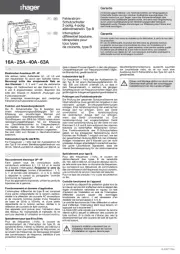
12 Mei 2025
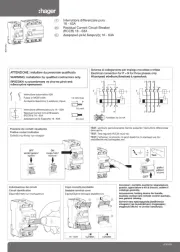
12 Mei 2025

12 Mei 2025
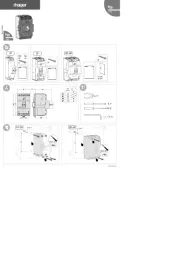
12 Mei 2025
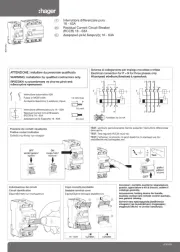
12 Mei 2025
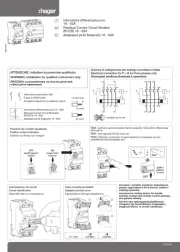
12 Mei 2025
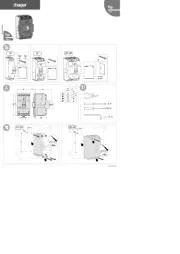
12 Mei 2025
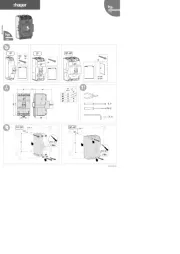
12 Mei 2025
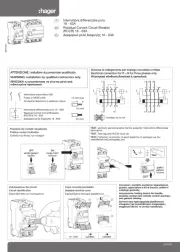
12 Mei 2025
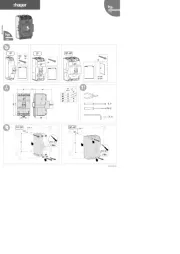
12 Mei 2025
Handleiding Niet gecategoriseerd
- SEDEA
- ChyTV
- Mobicool
- Universal Remote Control
- KENUCO
- Southwire
- Ulanzi
- Gefen
- Mitzu
- G3
- Chimera
- Kranzle
- Gerber
- Sonnenkonig
- Samac
Nieuwste handleidingen voor Niet gecategoriseerd

17 September 2025

17 September 2025

17 September 2025

17 September 2025

17 September 2025
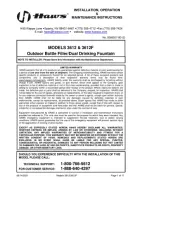
17 September 2025
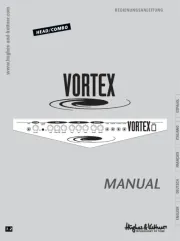
17 September 2025

17 September 2025
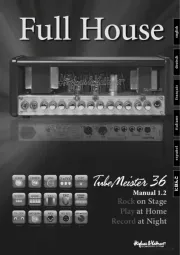
17 September 2025

17 September 2025